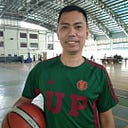Natural Lawn Mower
by Oliver Carlos
In the summer of 1997, I took up a part-time job to practice my profession as a Human Ecologist and Environmental Scientist. I was a science teacher in a high school at that time, and since we were on a summer break, I joined a team of professionals doing EIA and SIA in Cavinti, Laguna. I worked as an enumerator (that’s what they call an interviewer) for one week.
EIA means Environmental Impact Assessment, and SIA means Social Impact Assessment. These are subjects in my cognate in graduate school. In the Cavinti project, my job was to interview folks living around Lumot Lake in eastern Laguna. The data I would gather would be used by policy makers in their work of striking the balance between constructing man-made structures and preserving nature. That herculean task is called Sustainable Development, which was a very popular term in the 1990s.
While in Cavinti, I was amazed by the beauty of its prairies. The folks call those places parang. That’s where they grazed their goats, cows and carabaos. The parang was covered by short and soft grass. The villagers made money out of these. They had a sud-sud industry. They scrape earth containing the grass, which they call blue grass, and sell them to landscapers who frequent the vicinity. I remember that one square foot of grass sold for 1 peso. That was way back in 1997. I wonder if they still have that industry today?
Recently, I drove to that area, to the twin lakes of Caliraya Lake and Lumot Lake. I’m glad to see the place still looking very green. The prairies are still there and so are the carabaos. I was fascinated with these animals, so I alighted from my car and observed one of them up close while it feasted on the fresh green grass. I took photos and videos of my newfound friend.
It’s fun watching how the carabao enjoys its lunch, while at the same time, keep the parang well-maintained. The grass doesn’t grow tall and unkempt because the carabao’s teeth functions like a natural lawn mower! I saw the extreme close-up of how this animal bites the grass, cuts its leaves, chew it to its delight, and makes the place look good and green. The carabao doesn’t uproot the whole grass plant, but only cuts a portion of the leaves, probably because the carabao wanted to avoid getting bits and chunks of soil and roots in its mouth.
Incidentally, there’s a story in the Bible of a man who ate grass like a cow. He’s no ordinary man, as he was the Emperor of the mighty Babylonian empire! This guy is none other than King Nebuchadnezzar. We also find his name in history books. The story of him losing his sanity and behaving like a cow can be read in Daniel 4. Here’s an excerpt:
“King Nebuchadnezzar, these things will happen to you: Your power as king has been taken away from you. You will be forced to go away from people. You will live with the wild animals and eat grass like an ox. Seven seasons will pass before you learn your lesson. Then you will learn that God Most High rules over human kingdoms and gives them to whoever he wants.” (Daniel 4:31–32, ERV)
This happened because King Nebuchadnezzar grew too proud and self-centered. But at the end of his 7-year insanity, God restored to him his sound mind, his riches, and his power. And the best thing is that he became a believer of the one and only true God.
The moral of the story is that God is sovereign, he is the one who gives us success and all the wealth we have. Since he’s the source and owner of all these, he can take them away from us anytime he wants. Therefore, we must acknowledge this fact in our hearts, and live each day in reverence to him.
Today, let us thank God for what we have, and not grumble for the things that we don’t have. Sometimes we focus too much on our “have-nots”, to the point that we overlook or underappreciate our “haves.” So let us cherish and enjoy the material stuff, as well as the relationships we have at hand, and even our health, because we don’t know up to when we’ll have them with us.
